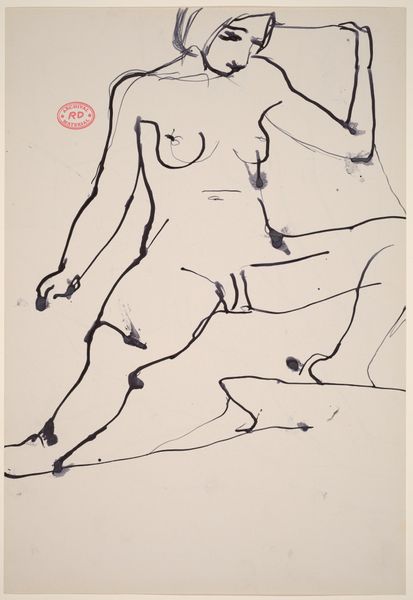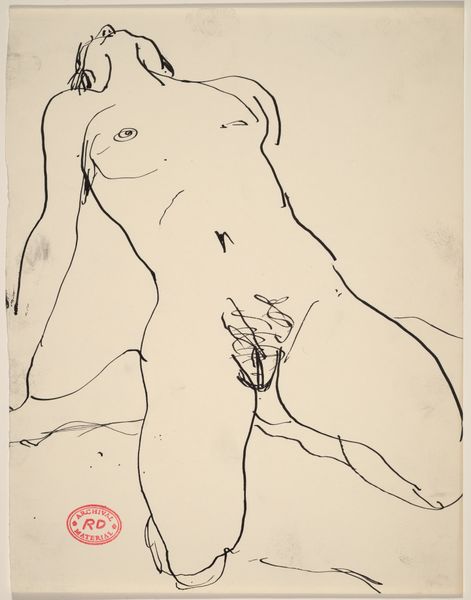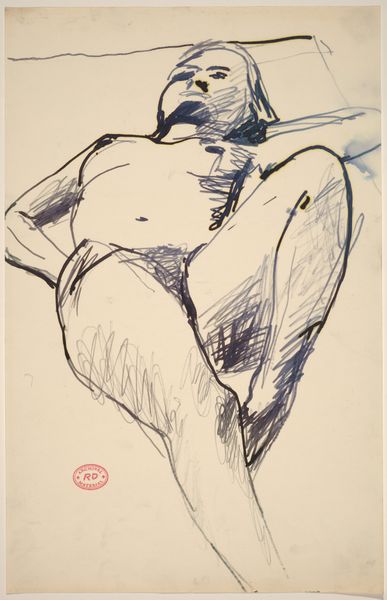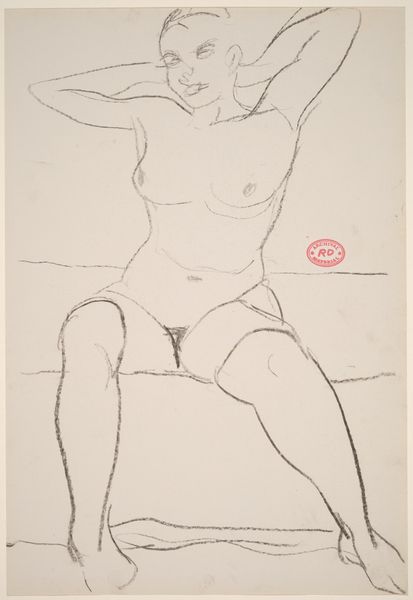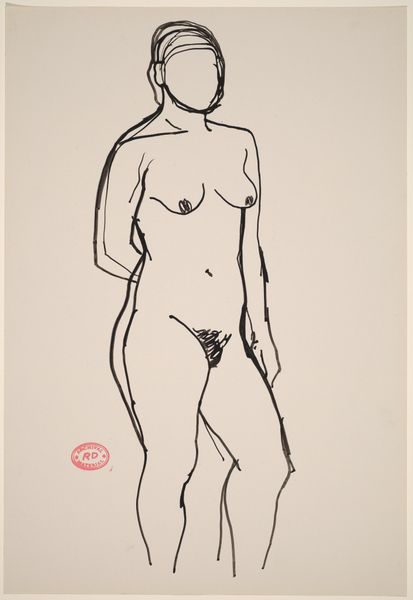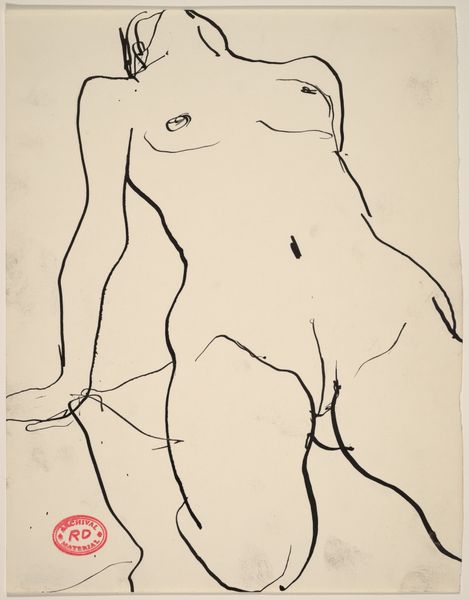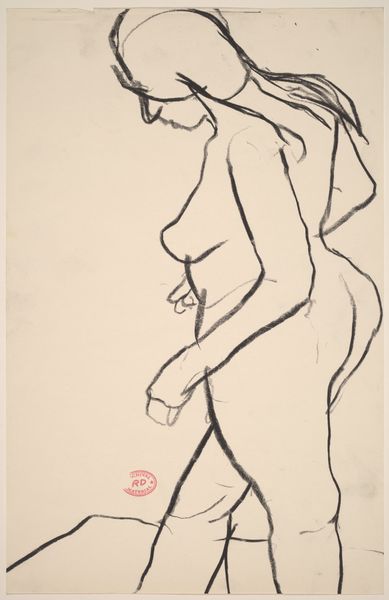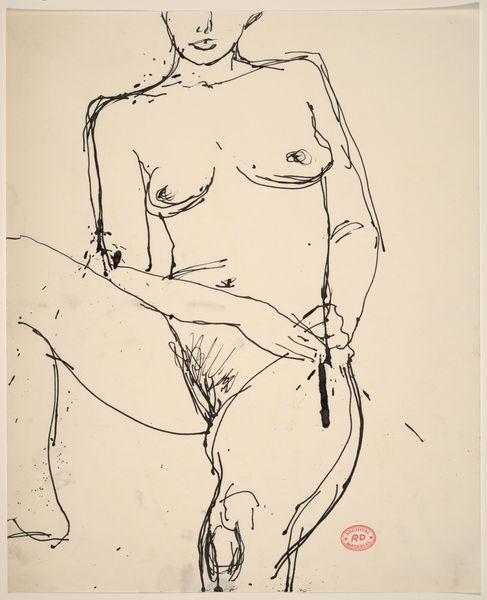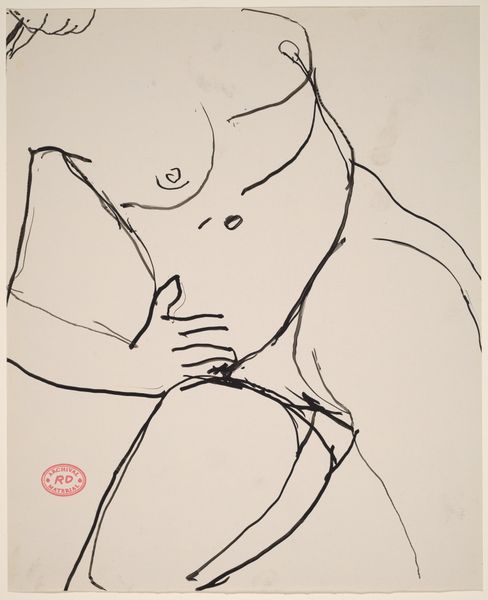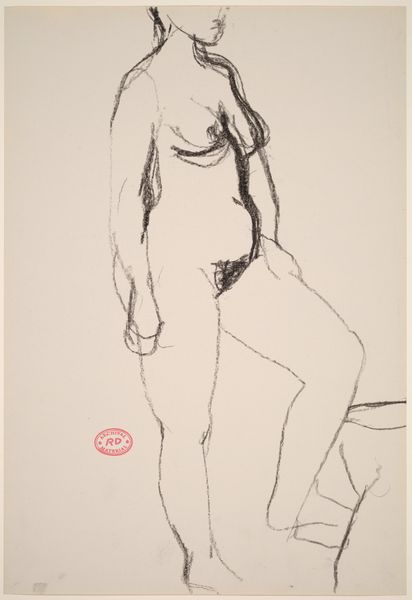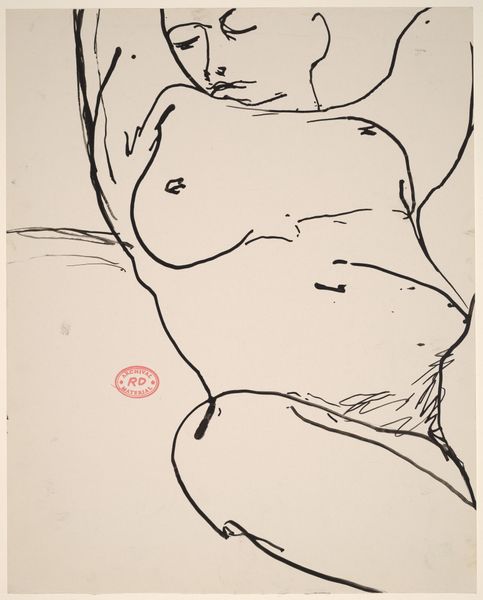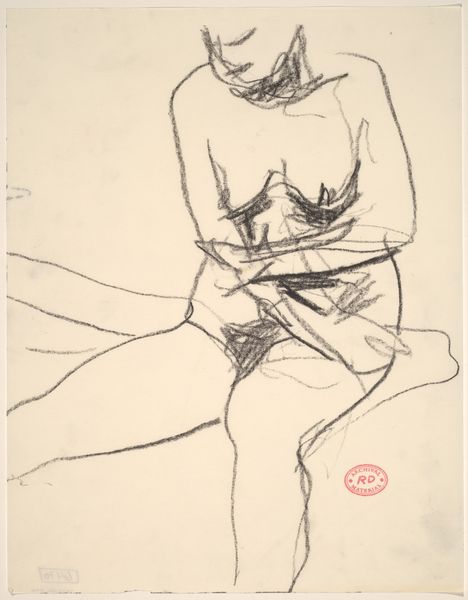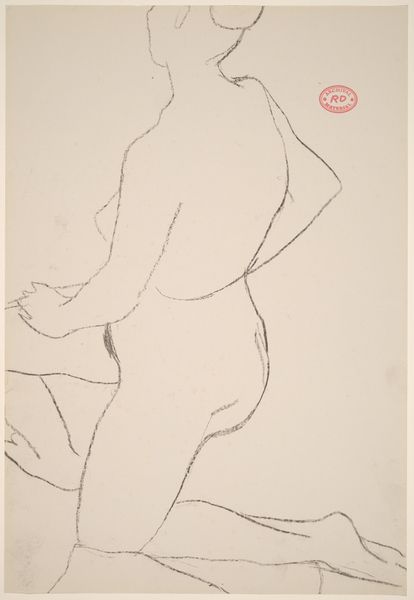![Untitled [bird's-eye view of a reclining female nude] by Richard Diebenkorn](/_next/image?url=https%3A%2F%2Fd2w8kbdekdi1gv.cloudfront.net%2FeyJidWNrZXQiOiAiYXJ0ZXJhLWltYWdlcy1idWNrZXQiLCAia2V5IjogImFydHdvcmtzLzU0MGYyOTg2LTNhYzItNDczNC04ZjBlLTdkOTQ2OTFlNDBiYi81NDBmMjk4Ni0zYWMyLTQ3MzQtOGYwZS03ZDk0NjkxZTQwYmJfZnVsbC5qcGciLCAiZWRpdHMiOiB7InJlc2l6ZSI6IHsid2lkdGgiOiAxOTIwLCAiaGVpZ2h0IjogMTkyMCwgImZpdCI6ICJpbnNpZGUifX19&w=3840&q=75)
Untitled [bird's-eye view of a reclining female nude] 1955 - 1967
0:00
0:00
drawing, ink
#
abstract-expressionism
#
drawing
#
ink drawing
#
pen sketch
#
figuration
#
bay-area-figurative-movement
#
ink
#
nude
Dimensions: overall: 34.9 x 27.9 cm (13 3/4 x 11 in.)
Copyright: National Gallery of Art: CC0 1.0
Curator: Today, we are looking at an ink drawing by Richard Diebenkorn, created sometime between 1955 and 1967. The work is titled, "Untitled [bird's-eye view of a reclining female nude]." Editor: My first thought is the boldness of line. It's so stark, the black ink on the bare page. There's a vulnerability too, a sense of intimacy almost. The composition being slightly above emphasizes her recumbent pose. Curator: Exactly, the elevated perspective lends a certain power dynamic, a surveying gaze perhaps. Consider also the cultural context: this was a time of shifting social norms around the female form, with artistic traditions often placing the female nude as an object of male desire. Diebenkorn, though, seems to subvert this, no? Editor: In a way. The loose lines resist easy objectification; they're searching, less about a finished "product" and more about the act of seeing and representing. It definitely hints at Abstract Expressionism, where process often overshadows a fixed representational outcome. Curator: Absolutely, and it raises questions about the gaze – whose gaze is privileged here? Diebenkorn was working in a period dominated by male artists representing women through, mostly, a male lens. It's easy to see his piece as either upholding tradition, or deviating from it by questioning standards of female presentation. Editor: Right. And if we push that further, the absence of clear facial features almost makes her universal, but perhaps dehumanizes her instead. I think the piece sits in that tension: individuality versus representation of womanhood within culture, and also intimacy against the act of observation from a somewhat anonymous angle. Curator: It is a testament to Diebenkorn's artistic inquiry. What is considered feminine or an object is so tied up in the artistic expectations of his period. Editor: It's that precarious balancing act which makes it stay with me; what initially presents as just a sketch ends up inviting all these questions about seeing, being seen, and who is setting that visual standard.
Comments
No comments
Be the first to comment and join the conversation on the ultimate creative platform.
